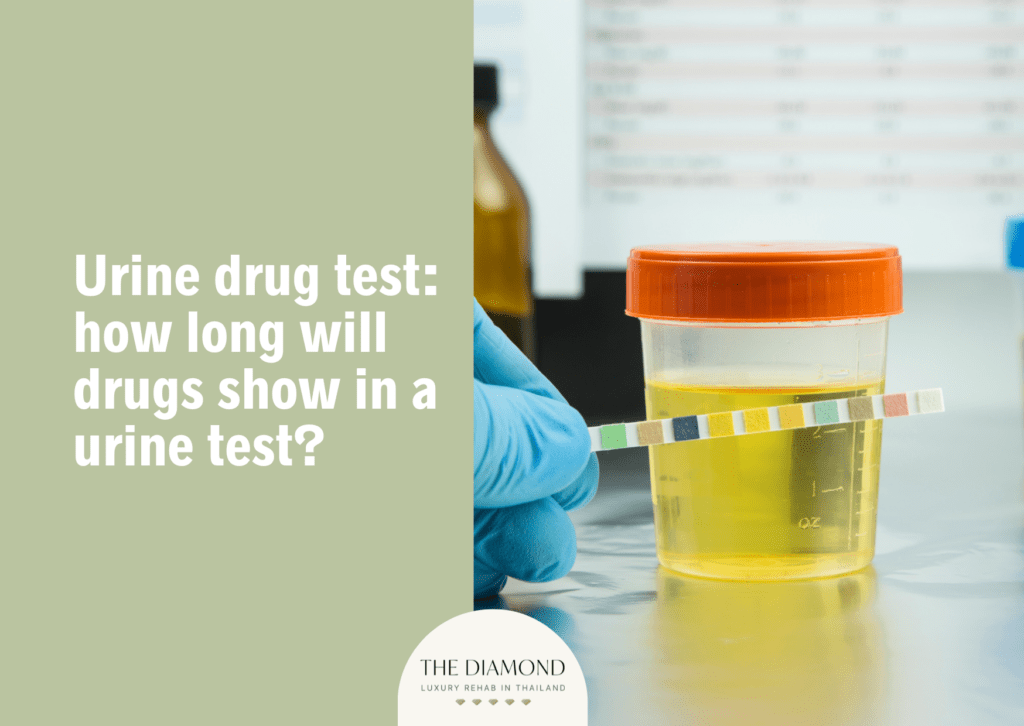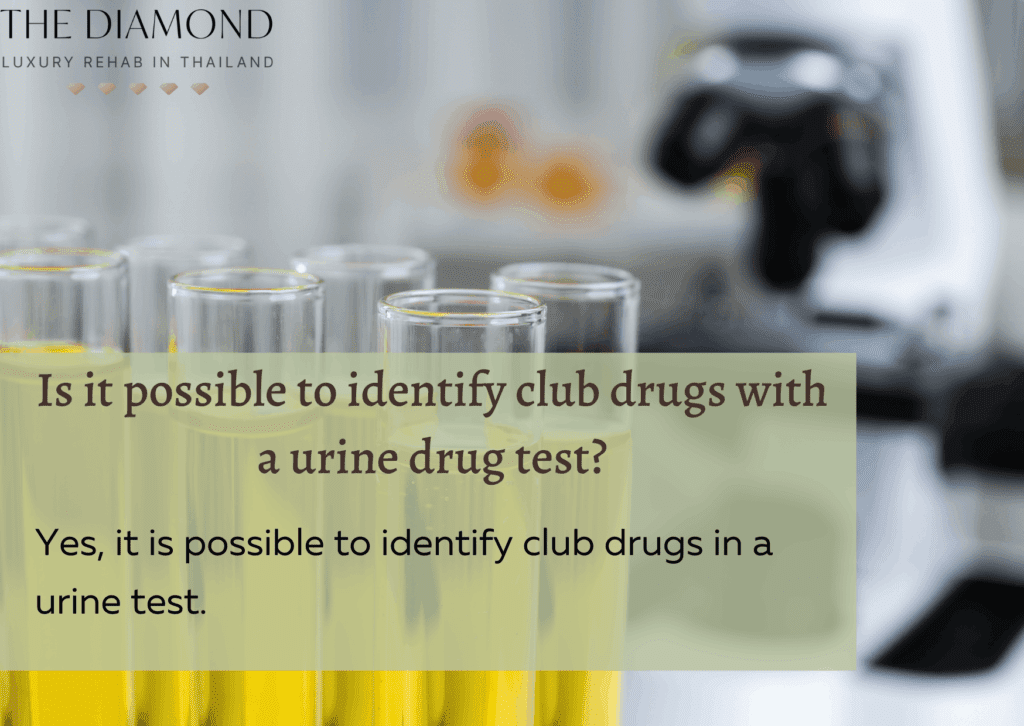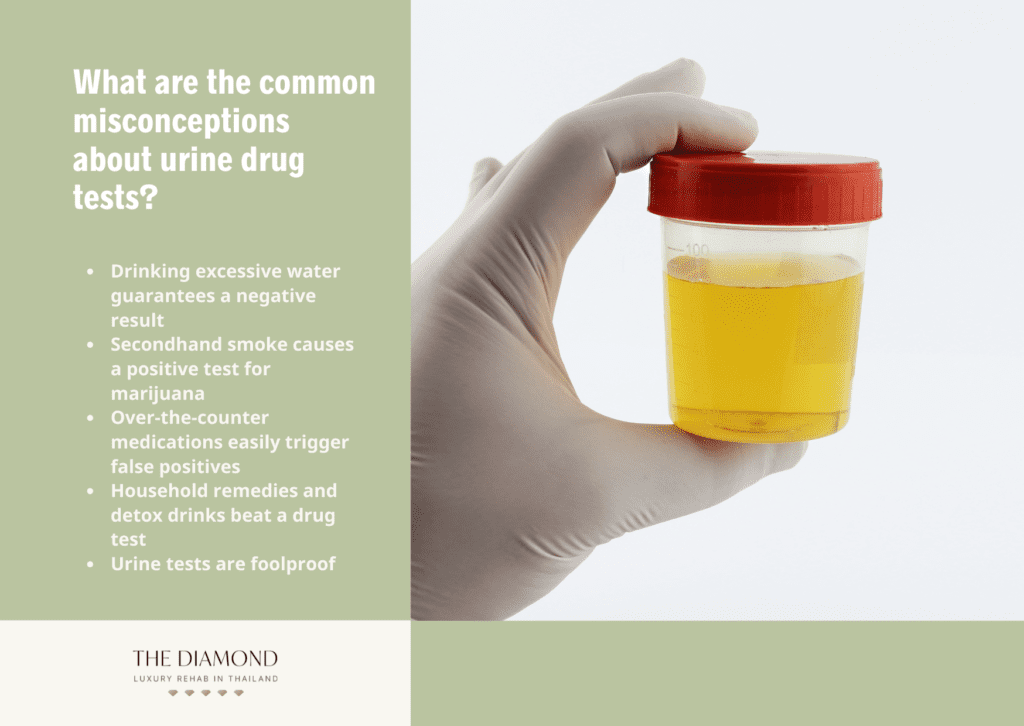Urine drug test: how long will drugs show in a urine test?
Table of content
- What is a urine drug test?
- How long will drugs show in a urine test?
- What drugs can be detected in a urine test?
- What is the procedure of a urine drug test?
- How does a urine drug test work?
- What are the types of urine drug tests?
- Is a urine drug test expensive?
- What is the usual purpose of conducting urine drug tests?
- How can you pass a urine drug test?
- What are the common misconceptions about urine drug tests?

A urine drug test is a common way to check if someone has used drugs or certain medications recently. The test is utilized in a variety of settings, including the workplace to ensure workers are drug-free, the medical field to verify patients are taking prescribed medications, and even legal proceedings.
Different drugs have varying detection windows. For example, marijuana appears in urine for up to 3 days with occasional use but lingers for over 30 days in heavy users. Cocaine clears within 2 to 4 days, while amphetamines and short-acting opioids remain detectable for 1 to 3 days, with long-acting opioids lasting over a week.
Phencyclidine stays in the system for 3 to 8 days, whereas benzodiazepines range from 3 days for short-acting types to 6 weeks for long-acting ones. Barbiturates have a detection window of 2 days to 3 weeks, methadone lasts 2 to 11 days, and methaqualone is found in urine for 3 to 14 days, depending on usage. Propoxyphene generally remains detectable for about 2 days.
The drugs detected in a urine test include marijuana (THC), cocaine, opioids, amphetamines, benzodiazepines, barbiturates, methadone, methaqualone, phencyclidine (PCP), and propoxyphene.
The procedure of a urine drug test begins with informing the individual about the process and obtaining consent. A midstream urine sample is collected under specific guidelines, then sealed and documented to ensure security. Initial screening detects drug metabolites, with positive results requiring confirmation through advanced testing methods.
What is a urine drug test?
A urine drug test (UDT) is a noninvasive screening technique used to look for prescription drugs and illegal substances in a urine sample to identify recent drug use. For the purpose of discovering drug metabolites in the body, this quick and painless test is frequently utilized in medical settings, workplaces, and court proceedings.
A UDT detects substances such as opioids, amphetamines, cocaine, marijuana, and benzodiazepines, depending on the panel used. Results typically appear within minutes for rapid tests, while lab-based analysis provides more detailed findings within a few days. The method remains one of the most reliable options for identifying drug use, as urine retains traces of substances longer than blood or saliva.
What is the other term for urine drug test?
Another term for urine drug test is urine drug screen (UDS), otherwise known as a tox screen. The procedure detects drug use by identifying traces of substances in urine, making it a common method for workplace screenings, medical evaluations, and forensic testing.
Certain factors, including hydration levels and urine pH, influence test results, while some individuals attempt to tamper with samples using adulterants or dilution methods. Due to such concerns, various facilities implement strict sample collection protocols, including temperature checks and supervised collection, to ensure accuracy and prevent tampering.
What is a 10-panel drug test?
A 10-panel drug test is a screening method that detects traces of 10 different types of drugs in a person’s system, including both legal and illegal substances. The test typically checks for the five most frequently misused street drugs—cocaine, marijuana, amphetamines, opioids, and PCP—along with commonly abused prescription medications such as benzodiazepines, barbiturates, methadone, methaqualone, and propoxyphene.
The detection window varies based on the drug, metabolism, and frequency of use, with certain substances remaining in the body for days or even weeks. When a more thorough screening is required, a 10-panel test is helpful since it offers a more thorough evaluation than basic drug tests concentrating on a limited number of substances.
What is a 5-panel drug test?
A 5-panel drug test serves as a screening method for detecting five types of commonly abused substances, including both illegal drugs and certain prescription medications. The process typically examines samples for marijuana, cocaine, amphetamines, opioids, and phencyclidine (PCP), among the most frequently misused drugs.
While primarily designed to detect illegal drugs, the test additionally reveals the misuse of certain prescription drugs containing opioids or amphetamines. Due to its focused approach, 5-panel drug testing remains a widely used method for assessing drug use efficiently.
How long will drugs show in a urine test?
The duration in which drugs show in a urine test refers to how long substances remain detectable in a urine sample after use. The duration in which drugs show in a urine test are indicated in the table below.
| How Long Drugs Show In A Urine Test | |
| Drug | Detection window |
| Marijuana | 3 days (occasional use) to 30+ days (heavy use) |
| Cocaine | 2 to 4 days |
| Amphetamines | 1 to 3 days |
| Opioids | 1 to 3 days (short-acting) to 7+ days (long-acting) |
| Phencyclidine | 3 to 8 days |
| Benzodiazepines | 3 days (short-acting) to 6 weeks (long-acting) |
| Barbiturates | 2 days (short-acting) to 3 weeks (long-acting) |
| Methadone | 2 to 11 days |
| Methaqualone | 3 days (occasional use) to 14 days (heavy use) |
| Propoxyphene | 2 days |
Detection times depend on various factors, including metabolism, hydration levels, and frequency of use. While the estimates above provide general guidelines, individual results vary. Confirmatory tests, such as gas chromatography-mass spectrometry (GC-MS), help ensure accuracy when necessary.
How long does marijuana stay in your system?
Marijuana stays in your system for varying lengths of time depending on the frequency of use, metabolism, and the type of test performed. Detection in the urine lasts around 3 days for occasional users, while chronic daily users test positive for 30 days or longer due to THC buildup in fat cells.
Blood tests typically detect marijuana for 12 hours, but heavy use extends detection up to 7 days. THC remains traceable in the saliva for 24 hours in occasional users, while frequent use leads to detection for up to 72 hours.
Hair tests provide the longest detection window, showing traces of marijuana for up to 90 days, as THC metabolites become embedded in hair follicles over time.
How long does cocaine stay in your system?
How long cocaine stays in your system depends on usage frequency, metabolism, and the type of drug test performed. Cocaine remains detectable in the urine for 2 to 4 days, though heavy or frequent use extends detection up to a week.
Blood tests typically detect cocaine for 12 hours to 2 days, while saliva tests identify traces for 1 to 2 days. Hair tests have the longest detection window, revealing cocaine use for up to 90 days due to metabolite buildup in hair follicles.
How long does nicotine stay in your system?
Nicotine stays in your system for varying lengths of time depending on metabolism, frequency of use, and the type of test administered. Nicotine and its metabolite, cotinine, remain detectable in the urine for at least 3 days in occasional users, while heavy smokers test positive for up to 3 weeks.
Blood tests typically detect nicotine for 1 to 3 days, but cotinine, which lingers longer, tends to be present for up to 10 days. Traces of nicotine persist in the saliva for 1 to 4 days, though frequent use leads to longer detection. Hair tests provide the most extended detection window, identifying nicotine exposure for up to 90 days.
How long does alcohol stay in your system?
Alcohol stays in your system for different lengths of time depending on metabolism, consumption levels, and the type of test used. The body processes alcohol at a rate of about one hour per one standard drink, but traces remain detectable for longer.
In urine, alcohol is identified for 12 to 24 hours, though advanced tests detecting ethyl glucuronide (EtG) extend this window to up to 80 hours. Blood tests typically show alcohol for 6 to 12 hours, while saliva tests detect traces for 12 to 24 hours.
Hair tests detect alcohol use for up to 90 days, as ethanol metabolites get incorporated into hair strands during growth.
Which factors affect urine drug detection time?
Factors affecting urine drug detection time describe various elements influencing how long substances remain detectable in a urine test. The factors affecting urine drug detection time are listed below.
- Hydration levels: Drinking large amounts of water help flush substances from the system more quickly, potentially reducing detection time. Dehydration, on the other hand, concentrates drug metabolites in urine, making a substance more likely to be detected. Overhydration, however, dilutes the sample and raises suspicion or results in an invalid test.
- Body mass: Individuals with higher body mass tend to retain fat-soluble drugs, such as THC, for longer periods. Excess body fat slows the elimination of such substances since stored metabolites accumulate in fat cells. A 2019 paper by Strawn et al., titled “A prospective study to assess the association of body mass index and contamination of urinalysis samples” discovered patients with contaminated urine samples exhibited a higher mean body mass index (BMI) of 32.7 ± 10.2, in contrast to patients with uncontaminated samples, who had a BMI of 29.7 ± 8.8 (p < 0.01). A higher BMI correlates with increased urinalysis (UA) contamination, reinforcing the idea obese individuals face difficulties in providing clean urine samples.
- Acidity of the urine: Urine pH influences how quickly certain drugs are excreted from the body. Acidic urine speeds up the elimination of certain substances, such as amphetamines, by increasing solubility. Alkaline urine, on the other hand, prolongs detection times by slowing drug breakdown and excretion. Diet, hydration, and medications alter urine pH, affecting test results.
- Last use of the drug: The time elapsed since the last drug use significantly impacts detection windows. A single-use case generally clears from the system faster than habitual or heavy consumption. Longer periods of abstinence allow the body to fully metabolize and excrete substances, reducing the likelihood of detection. Recent use, especially within a few hours or days of testing, increases the chances of a positive result.
What drugs can be detected in a urine test?
Drugs detected in a urine test are compounds found by urinalysis, exposing recent drug usage depending on metabolites in the sample. The drugs that can be detected in a urine test are listed below.
- Marijuana (THC): Marijuana metabolites remain in urine longer than various other substances, especially for frequent users. THC dissolves in fat, leading to accumulation in body fat and a slow release over time. Psychoactive properties make marijuana testing common in workplace and legal screenings.
- Cocaine: Cocaine breaks down into metabolites, exiting the body quickly, though urine tests still detect usage for up to three days in casual users. The stimulant produces short-term euphoria, increased energy, and heightened alertness, making the substance highly addictive. Urine screening identifies cocaine use in medical, employment, and rehabilitation settings.
- Opioids: Opioids include heroin, morphine, codeine, oxycodone, and hydrocodone, all known for pain-relieving effects. Numerous drug tests screen for opioids due to widespread prescription and illicit use. According to a 2023 research article by Andraka-Christou et al., titled “Urine drug testing in the context of opioid analgesic prescribing for chronic pain: a content analysis of U.S. state laws in 2022,” urine drug testing (UDT) aids in the detection of illicit substance usage and the monitoring of opioid use. Additionally, the procedure permits referrals to treatment for opioid use disorder (OUD) or modifications to pain management.
- Amphetamines: Stimulants like Adderall and methamphetamine enhance focus, energy, and alertness but pose a high risk of addiction. Such drugs cause serious cardiovascular problems and have an impact on the central nervous system. A number of organizations carry out screenings to detect amphetamine abuse and guarantee safety.
- Benzodiazepines: Commonly prescribed for anxiety and insomnia, benzodiazepines include drugs such as diazepam, alprazolam, and lorazepam. These medicines depress the central nervous system, producing sedation and muscle relaxation. Prolonged use increases dependence risk, making detection crucial in medical and rehabilitation settings.
- Barbiturates: Barbiturates act as sedatives and were once widely used for anxiety and sleep disorders but carry a high risk of overdose. Barbiturates were widely used in the early 1900s but have been largely replaced by benzodiazepines due to significant toxicity and high dependence risk. Although contemporary usage rates remain minimal, these drugs continue to pose a problem because of a limited safety margin and potential for overdose, as noted by a 2011 article by Fritch et al., titled “Barbiturate Detection in Oral Fluid, Plasma, and Urine.”
- Methadone: Used in pain management and opioid addiction treatment, methadone has a long half-life, making detection possible for up to two weeks. The synthetic opioid blocks euphoric effects of other opioids, helping individuals manage withdrawal symptoms. Misuse still occurs, leading to dependence and overdose risks.
- Methaqualone: Once prescribed as a sedative, methaqualone was widely misused for its euphoric and relaxing effects before being banned in numerous countries. Side effects include dizziness, slowed breathing, and impaired coordination, increasing the risk of overdose. Although no longer legally available, certain screenings still include methaqualone due to continued illicit use.
- Phencyclidine (PCP): PCP, a dissociative drug, induces hallucinations, distorted perception, and violent behavior in high doses. Urine tests detect PCP for up to a week after use, while chronic users show positive results for a month or longer. The drug’s highly damaging psychological effects cause users to act irrationally and aggressively.
- Propoxyphene: A pain-relieving medication once prescribed for mild to moderate pain, propoxyphene was withdrawn from the market due to serious heart-related risks. Despite previous medical use, concerns over toxicity and potential for misuse led to a ban in several countries. Even though production has ceased, individuals continue to obtain and use leftover supplies illicitly.
Is it possible to identify club drugs with a urine drug test?

Yes, it is possible to identify club drugs with a urine drug test, but the accuracy and detection depend on the specific drug and the type of test used. A 2011 paper by Chakraborty et al., titled “Club drugs: review of the ‘rave’ with a note of concern for the Indian scenario” explained how conventional immunoassay-based urine drug tests frequently do not detect drugs such as MDMA (Ecstasy), GHB, ketamine, and Rohypnol (flunitrazepam).
Gas chromatography-mass spectrometry (GC-MS) testing must be explicitly requested to verify the presence of these substances. The study additionally noted the difficulty of detecting club drugs due to their short detection windows, making the testing process more complex.
For instance, GHB leaves the body within 12 hours, and routine urine screens rarely include tests for this substance unless specifically requested. Similarly, ketamine does not appear in standard drug panels and requires high-performance liquid chromatography (HPLC) for accurate identification. Flunitrazepam (Rohypnol) is challenging to trace because metabolism occurs rapidly, allowing detection in urine for only up to 72 hours after use.
Thus, while urine drug tests detect certain club drugs, routine screenings fail to provide reliable results, necessitating specialized techniques such as GC-MS or HPLC for more precise detection.
Can prescription drugs be detected in a urine test?
Yes, prescription drugs can be detected in a urine test. Several drug tests cover routinely prescribed drugs, particularly ones with great potential for abuse, including opioids, benzodiazepines, amphetamines, and barbiturates.
A number of factors, including dosage, frequency of use, metabolism, and the particular drug under test, affect detection. However, not all prescription drugs appear in routine drug panels. Certain medications, like antidepressants, antipsychotics, or certain pain relievers, require specialized tests such as GC-MS or HPLC for accurate identification.
Detection windows vary—short-acting drugs are often detectable for a few hours to a couple of days, while long-acting or fat-soluble drugs remain detectable for several weeks.
Can a urine drug test show how much drugs you take?
No, a urine drug test cannot show how much drugs you have taken. Although UDT methods detect drug presence, they do not tell clinicians exactly how much, when, or for how long after use the drug screen is expected to reveal positive results, according to a 2020 article by Bhushan M. Kapur and Katarina Aleksa, titled “What the lab can and cannot do: clinical interpretation of drug testing results.”
A standard UDT identifies whether a drug or metabolites are present in urine, providing a qualitative result (positive or negative) rather than a quantitative measure of the exact amount consumed, the paper added.
Metabolism, hydration, and time since last use affect substance concentration in urine, making precise intake difficult to determine. Even elevated drug metabolite levels do not always indicate heavy or recent use, as certain substances remain in the body longer than others.
What is the procedure of a urine drug test?
The procedure of a urine drug test starts with preparation and consent, where the individual is informed about the test’s purpose and required to provide written consent, especially in the workplace or medical settings.
Next, the patient is instructed to wash hands, refrain from flushing the toilet, and pee into a sterile container, collecting a midstream urine sample of at least 30-45 mL. The sample is then sealed, labeled, and documented to maintain a secure chain of custody.
The sample undergoes an initial immunoassay screening to detect drug metabolites, with negative results requiring no further testing. If the initial test is positive, confirmation follows using more advanced methods.
Is there a certain age limit for who can do a urine drug test?
No, there is no certain age limit for who can do a urine drug test, but the requirements for consent and the circumstances of testing vary based on age, legal regulations, and clinical necessity.
Adults typically undergo drug testing without restrictions, whereas minors, usually under 18, need parental or guardian consent unless state laws permit independent substance use treatment. Drug testing in young children is rare and usually only done in cases of suspected accidental poisoning, neglect, or medical necessity.
According to a 2017 paper by Scott E. Hadland and Sharon Levy, titled “OBJECTIVE TESTING – URINE AND OTHER DRUG TESTS,” states vary in the age adolescents voluntarily seek, agree to, and receive drug use treatment programs.
Certain situations consider a minor’s emotional, social, and cognitive development alongside chronological age. Furthermore, laws differ across states regarding parental notification once an adolescent provides consent for treatment. Researching state-specific regulations is encouraged by the authors.
While there is no universal age limit for urine drug testing, the necessity of such testing must always take ethical, legal, and medical factors into account, ensuring testing remains justified, consent is secured when needed, and results are analyzed carefully to prevent misdiagnosis or unwarranted consequences.
How does a urine drug test work?
A urine drug test works by examining a urine sample for drug metabolites—substances the body generates after breaking down a drug. At the lab, the sample undergoes initial screening with an immunoassay (EIA or EMIT) test designed to identify common drugs such as marijuana, opioids, amphetamines, cocaine, and benzodiazepines.
If the urine tests positive, a confirmatory test using gas chromatography-mass spectrometry (GC-MS) or liquid chromatography-mass spectrometry (LC-MS) is performed to ensure accuracy and rule out false positives.
The results are recorded, and any cross-reactivity with prescription medications is considered before finalizing the report. A negative result is usually available within 24 hours, while additional testing for positive samples takes around 2-3 days. The final report is sent to the appropriate parties, such as an employer, doctor, or legal authority.
How accurate are urine drug tests in detecting drug use?
Urine drug tests are widely used to detect drug use, but they are not 100% accurate and sometimes produce incorrect results. While a UDT is generally reliable, false positives and false negatives occur due to cross-reacting drugs, improper sample handling, or deliberate tampering.
For example, over-the-counter medications like ibuprofen or cold remedies sometimes lead to incorrect results, making confirmatory testing necessary to improve reliability. Additionally, the accuracy of detection varies—certain drugs, like cannabis, are detected for weeks, while others, like alcohol or cocaine, leave the system within days.
Since UDTs are not foolproof, reliability must always be considered in the context of clinical judgment and confirmatory testing when needed.
What are the types of urine drug tests?
Types of urine drug tests describe the different approaches employed to screen urine samples for drug metabolites. The types of urine drug tests are listed below.
- Immunoassay (IA): Using antibodies reacting to particular compounds, the immunoassay test acts as a quick screening technique to identify drug metabolites. Given the risk of false positives, a positive result calls for further confirmation. Workplace testing, medical evaluations, and rehabilitation programs continue to employ immunoassays extensively. A rapid turnaround time is a contributing factor to the pervasive use of such an approach for initial drug detection.
- Gas chromatography/mass spectrometry (GC/MS): High-precision GC-MS confirms the presence of pharmaceuticals by separating chemicals and identifying substances by use of mass spectrometry. During GC-MS testing, heat transforms the sample into a gas, allowing various substances to separate while moving through a specialized column. Precise drug detection is achieved through the identification of each component using its unique chemical fingerprint.
Is a urine drug test expensive?
No, a urine drug test is generally not expensive, but costs fluctuate based on the test type, substances analyzed, and the necessity for laboratory confirmation. Basic urine drug tests remain popular due to affordability, quick results, and ease of administration.
However, factors such as confirmatory analysis, specialized screenings for synthetic or prescription drugs, and the location where testing occurs influence the total expense.
What is the average price of a urine drug test?
The average price of a urine drug test typically ranges between $62 and $308, with a reasonable cost estimated at $128, according to a 2019 article by Neelima Kale, titled “Urine Drug Tests: Ordering and Interpretation.”
Depending on the kind of test, Medicare pays anywhere from $13 to $72 for urine drug testing. Additionally, the investigation found certain insurers restrict the number of urine drug tests reimbursed annually, while others do not provide coverage for the procedure at all.
Basic options, such as at-home testing kits, offer the most affordable choice, typically ranging from to per kit. However, at-home tests provide only preliminary results, often requiring laboratory confirmation to ensure accuracy, leading to additional expenses.
Laboratory-based urine drug tests performed at clinics or medical facilities typically cost between $30 and $100, depending on the variety of substances analyzed. More advanced confirmatory methods like GC-MS range from $100 to $300 due to greater precision and the capability to distinguish between similar compounds.
What is the usual purpose of conducting urine drug tests?
The usual purpose of conducting drug tests is to detect the presence or absence of drugs in a person’s system for various medical, legal, and occupational reasons. Commonly utilized in corporate environments to guarantee personnel follow company policies, especially in safety-sensitive jobs like transportation, healthcare, and law enforcement, drug tests offer evidence of recent drug usage.
As a way to ensure appropriate pharmaceutical use without substance abuse, healthcare professionals employ drug testing to keep an eye on patients receiving long-term opioid therapy. People involved in criminal proceedings, probation programs, and child custody battles must undergo screenings in legal and forensic settings.
For the discovery of prohibited substances or performance-enhancing drugs, sports and athletic organizations use testing. Schools and rehabilitation centers implement drug testing as well to discourage substance abuse and ensure a drug-free environment.
How is urine drug test used in medical diagnostics?
Urine drug test is used in medical diagnostics to identify substance use disorders, assess medication adherence, and identify potential health issues. Urine analysis is used by doctors to track patient compliance with prescribed controlled drugs, such as benzodiazepines or opioids, therefore guaranteeing appropriate use free from abuse.
UDT plays a crucial role in emergency medicine by enabling prompt identification of substance intoxication or overdose, ensuring appropriate medical intervention. Urine drug testing additionally reveals problems with the kidneys or liver associated with long-term substance abuse.
Treatment programs for addiction frequently depend on testing to ensure patients adhere to prescribed treatment plans and to facilitate the process of recovery.
How can you pass a urine drug test?
The only guaranteed way you can pass a urine drug test is to completely avoid drug consumption. A number of people claim methods like drinking excessive water, using detox products, or consuming certain foods helps clear substances from the system, but scientific research does not fully support such methods.
While increasing fluid intake and eating foods rich in fiber assist the body’s natural detoxification, no method ensures the complete removal of drug metabolites within a short period. Relying on unproven techniques carries risks, as testing facilities detect diluted samples or attempts to alter results, resulting in a need for another test.
How long do you need to be clean to pass a urine drug test?
The time required to be clean to pass a urine drug test varies depending on factors including metabolism, frequency of use, and the particular substance in question. Different substances have varying detection windows, with certain drugs leaving the system within a few days, while others are detectable for weeks.
For example, cocaine and amphetamines typically clear the system within 2 to 4 days, while opioids such as heroin and oxycodone are detected for 3 to 4 days. Marijuana, however, has the longest detection window, lasting anywhere from a few days for occasional users to over a month for heavy, chronic users, since THC metabolites are stored in fat cells and take longer to clear.
Allowing sufficient time for the body to fully process and remove the substance is essential, considering detection windows and individual health conditions.
What are the common misconceptions about urine drug tests?

Common misconceptions about urine drug tests involve widespread false beliefs or misunderstandings regarding how such tests function, accuracy levels, and methods used to alter results. The common misconceptions about urine drug tests are listed below.
- Drinking excessive water guarantees a negative result: Many believe consuming large amounts of water flushes drugs out of the system and ensures a negative test. While increased fluid intake helps with general hydration, excessive water consumption dilutes urine, making the sample suspicious. Laboratories often test for creatinine levels to detect dilution and require a retest if the sample appears too clear. Instead of guaranteeing a negative result, the approach ends up raising red flags and leads to further scrutiny.
- Secondhand smoke causes a positive test for marijuana: A widespread misconception claims exposure to someone smoking marijuana causes a positive test result. Passive contact with cannabis smoke fails to introduce sufficient THC into the body to register as positive under standard testing procedures. Drug screenings identify metabolites produced through direct consumption rather than minimal traces from short-term exposure.
- Over-the-counter medications easily trigger false positives: Many believe common medications, including ibuprofen or cough syrups, often lead to false positives for drugs. Some substances have been known to interfere with immunoassay tests, but advanced confirmatory methods like GC-MS and LC-MS precisely distinguish medications from illicit drugs. Testing facilities use confirmatory techniques to avoid result misinterpretation. Anyone worried about medication interference must notify the testing administrator in advance for proper assessment.
- Household remedies and detox drinks beat a drug test: Consuming vinegar, cranberry juice, or commercial detox drinks is often thought to eliminate drug traces from urine. Although detox products advertise faster elimination, no scientific proof confirms effectiveness in fully concealing substance use. Testing methods reduce the possibility of tampering with findings by detecting both drugs and indications of manipulation. Unexpected results are more likely to occur when using dubious techniques, raising the chance of failing the test.
- Urine tests are foolproof: Drug tests are often considered infallible, with results assumed to be entirely accurate. However, errors such as false positives and false negatives arise due to medication interference, sample mishandling, or variations in metabolism. Although advanced confirmatory techniques enhance precision, no testing method ensures absolute reliability. Recognizing the limitations of drug screening helps reduce misinterpretation of results.


